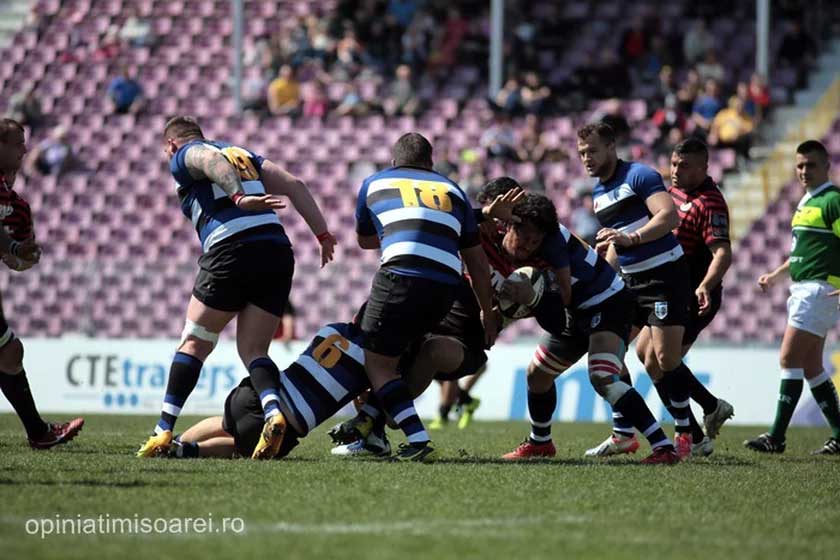Summing up from our last article, performing 1 week of 5 HIT sessions followed by 3 weeks of 1 HIT session a week with a general focus on low intensity training resulted in superior adaptations in VO2max, Wmax (maximal power) and power output at 2mmol/L of blood lactate compared with 4 weeks of 2 weekly HIT sessions interspersed with low intensity training. The ideas below are potential ways of implementing this way of organising training for team and combat sports.

Someone’s happy their aerobic conditioning paid off
My sport involves me being powerful, why should I spend so much time and effort developing my aerobic system?
The importance of developing a very large and powerful aerobic system for team or combat sports may have been underrated over the years with the idea of trying to create a powerful athlete. It is important to note an improved lactate threshold (shown in the study in part 1 from improvement in power output at 2mmol/L lactate) from this organisation of training means you have less reliance on the anaerobic system (a good thing!!) allowing your well-developed aerobic system to supply most of your energy. The anaerobic system is then used to “top up” during high intensity efforts while the majority of game play is spent aerobically. NOTE: all three energy systems are always working, but there is a greater emphasis on one or the other depending on the activity. This means you can sustain your power outputs throughout games and rounds and be less likely to gas out. For example, being able to throw harder punches for longer or being able to run faster for longer and more often. Furthermore, you will be able to recover faster between explosive efforts (punching, kicking, sprinting, tackling) meaning you can perform more work (e.g. repeated sprint) and recover faster between rounds or halves of play.
How could I use this for team sports during pre-season?
Potentially this schedule of training could be implemented in many, non-pure endurance based sports such as team sports. A rugby or soccer preseason may be a good place to implement this block periodisation. For examples sake, an 8 week preseason could potentially run a 5 HIT per week on weeks 1 and week 5 which frees up a lot of time in the subsequent weeks for technical training and other facets of fitness. During weeks 1 and 5 in this instance, volume of every other facet of training (strength, speed, power) would have to be reduced but the following 3 weeks would potentially allow you to get many good quality training sessions which are either technical or strength/speed based work.

Tackling by CSM Bucuresti, example of a high intensity effort
Could I use this during the in-season?
Where this organisation of aerobic training potentially has its merits is the week or 2 before a finals playoff series. This would lead well into 3 or 4 weeks of finals play as a lot of the heavy aerobic work is done allowing training between matches to be recovery and technical focused along with gym work. However, usually there is no break between the last game of the round and the first week of finals play so the last round game would have to have no bearing on your finals play. In addition to this, a higher risk of injury may be present due to the lowered perceived well-being of the legs as observed in the Ronnestad et al. [1] study. This could be offset by supplementing some running and cycling sessions with less lower body intensive training such as swimming or grinder.
If your team is really lacking aerobically during the season, then this could be implemented during a bye week but I feel this idea is really only beneficial if your preseason was well below average (e.g. couldn’t train very often etc). If anything, it may be detrimental to try this during a bye week, not in terms of aerobic adaptations but in terms of its impact on fatigue during a long season of weekly matches.

Two guys with massive aerobic gas tanks
What about combat sports?
Combat sports may best benefit from this style of organising conditioning training. This is because gassing out in a combat sport has very different consequences to gassing out in a team sport. One involves potentially losing, the other involves losing and potentially finding yourself in hospital. Usually, camps leading to a fight are 8 weeks. So similar to the rugby preseason example above, weeks 1 and 5 would involve 5 HIT sessions. The rest of the weeks would allow technical sessions to be the main focus leading up to the fight as well as strength/power work. Furthermore, it would allow you to taper well into the fight relieving any fatigue going in. The potential downfall of this would be the athlete would have to come into the camp with some form of training behind him otherwise thrusting them into 5 HIT sessions during the first week may lead to injury.
Overall, there are a few ways of implementing block perioidisation for aerobic development in non, pure endurance based sports. There is no one best way of organising training and the way you organise yours or your teams training is going to depend on the strengths and weaknesses of your squad/athlete, the time you have and the facilities available. The more options you have, the more situations you can solve.
